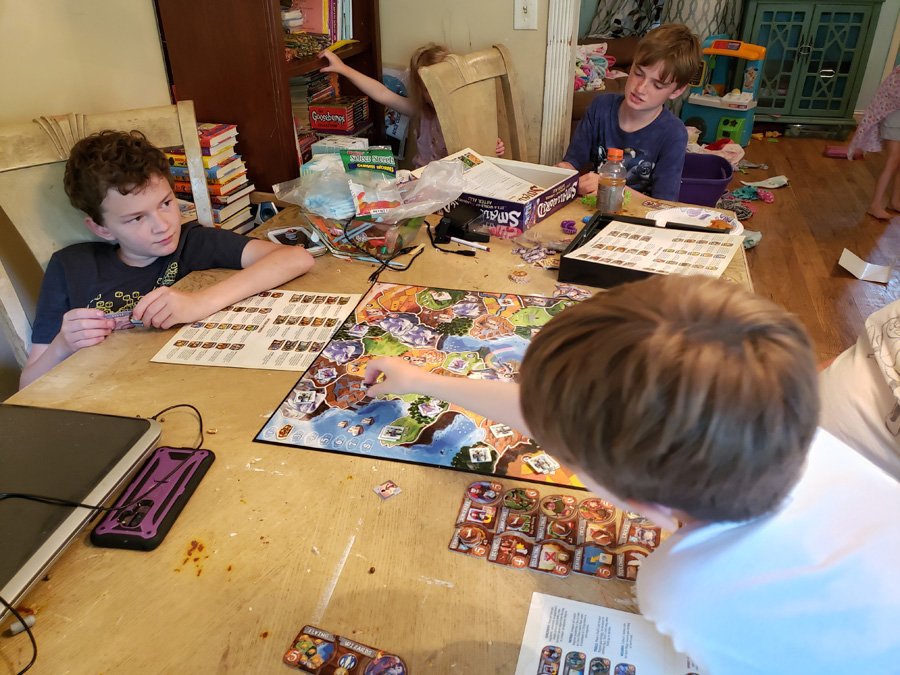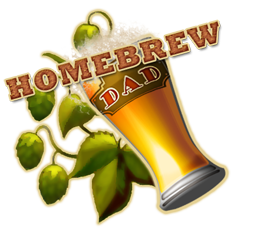Olan Suddeth
Dad. Computer geek.Homebrewer. Disney nut.
Would-be crafty guy.

Amazon
Save Money
Ibotta
Fetch Rewards
(use code "116YB")





Playing Small World around our dining room table
Nearly two years ago, Noah got a board game for Christmas that looked like it could be a lot of fun - and also looked like it could be pretty confusing. That latter part meant that Donna and I kept saying "we need to play that game soon"... but soon kept never happening.
Yeah, you may have heard a similar story before. Shame on us!
This time around, the game in question was Small World, by Days of Wonder (who you may recognize as the publisher of the incredibly popular "Ticket to Ride" games). In retrospect, we should have cracked this thing open a long time ago.

Image courtesy of Amazon
Small World is a conquest type game for ages eight and up. The game is designed for two to five players, and a typical game is probably going to last from forty-five minutes to an hour and a half. Our first play through was a little slow, but that had more to do with us figuring things out than anything else; I expect that future iterations will be quicker.
The basic idea is that you take control of one of fourteen fantasy races (humans, elves, trolls, dwarves, and so on) that have one of twenty special powers. Both the races and special powers are shuffled, then combined for the current game - and are limited to six choices at any given time - so no two games will set up exactly the same way.
Unlike the typical strategy games where you might build armies or whatnot, you start with an allotment of your people when you first choose them - and unless there are certain special circumstances, you will never get any more members of your race. This limits how much of the board you can conquer, and also means that losses will slowly whittle you down.
This leads to a core concept of the game - rather than ride your first pick through the entire game, you will almost always have to choose a time or two to declare your people to be "in decline" - at which point, you'll pick from the current list of available race/power combos in an attempt to breathe new life into your empire.
Every turn, you amass victory points (depicted by coins). Each game lasts for a set number of turns; at the end, everyone counts up their victory points, and the player with the most is the winner.
When you first open the box, you may wonder (like we did) what you have gotten yourself into. There are several sheets of cardboard game pieces that have to be punched out, and the roughly 3,287 pieces* seem really intimidating.
* - not an actual count; may be slightly exaggerated
But in reality, gameplay is relatively simple. Every turn, you deploy your forces, you decide where (or if) to attack, you move your troops to reinforce once you are done fighting, and you collect your victory points. Next!

The Small World game board in play
That said, there is plenty of complexity due to the combinations of races (and their inherent abilities) and the special powers. If you control the elves, for instance, your troops can be defeated but do not die - you simply redeploy them, which can give you a LOT of staying power. Skeletons are one of the only races that can grow their armies (via conquest, obviously). Giants are more powerful around mountain spaces. And so on and so forth.
Maybe the race you are thinking of picking isn't great, but this time around, they get a power that helps out - like an extra victory point for every forest space that you control. Or the ability to defend a space on the board with a dragon (who cannot be defeated by an army of any size). Or they can fly, meaning they can attack any space on the board, as opposed to having to march troops from one spot to the next. Having a total of 280 combinations available means that there is a TON of replay value, since every game will develop just a little different.
While yes, there are a TON of pieces, the fact is, the game and its pieces are very well made. The boards are thick (there are different game boards to use, based on how many players there are), and the various tokens are likewise sturdy and well detailed, with high quality art everywhere.

Some sample game pieces
Of course, the important question is this: is the game fun? That's easy; the answer is a resounding "yes". We had a great time playing Small World, and this one will definitely become part of our regular rotation.
Tags for this post: Product Reviews
Permalink
Please share this post!




If you enjoy HomeBrew Dad, please support the site by using my Amazon affiliate link when doing any shopping there. All prices are exactly the same, but HomeBrew Dad will receive a commission on your purchases. Thanks!
